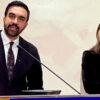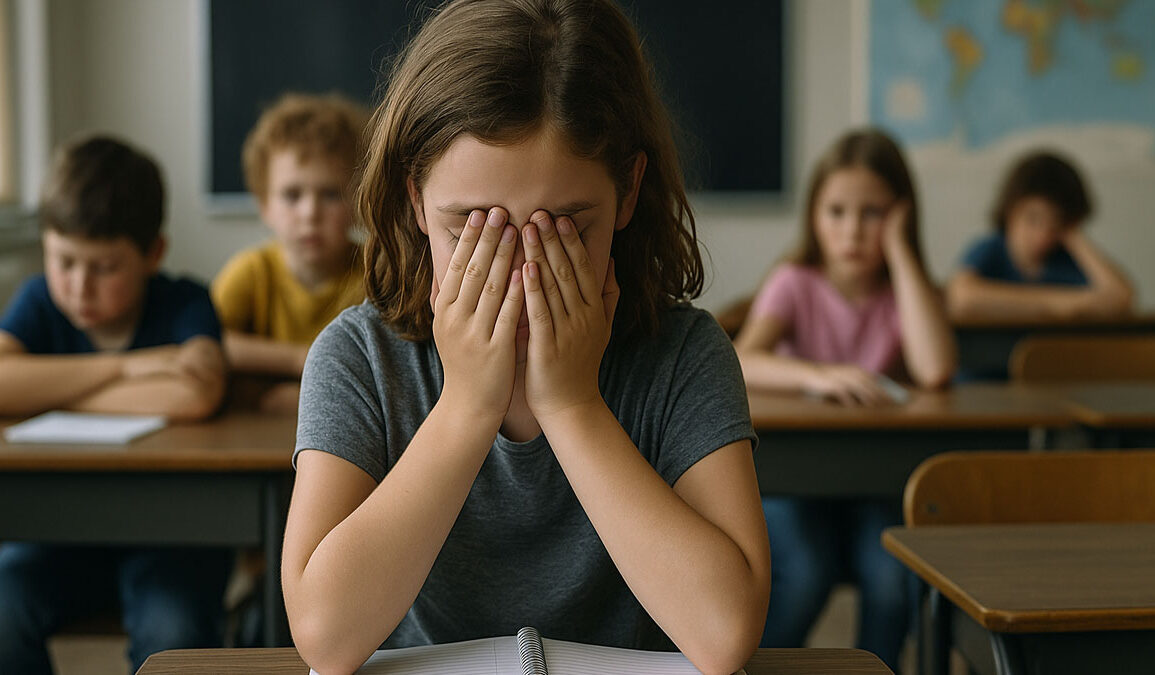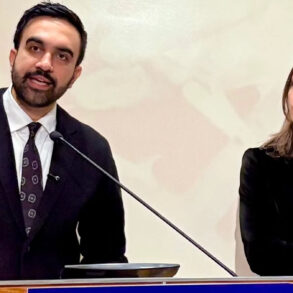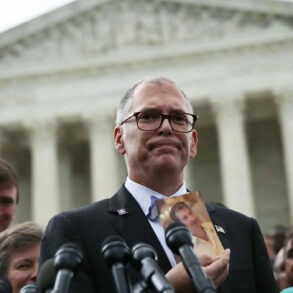A childhood interrupted
When Covid 19 began to spread in early 2020, adults worried mostly about hospitals, jobs and the economy. For children, the crisis looked different. Overnight, schools closed, playgrounds were taped off, and everyday social life stopped. Around 1.6 billion students in more than 190 countries had their education disrupted. Many families were suddenly stuck at home, juggling work, fear of infection and the new burden of remote school.
Governments said the closures were necessary to slow the virus. Yet documents and later investigations show that leaders knew early on that shutting schools would badly damage children’s education and wellbeing. In the UK, for example, a Department for Education memo sent to the Cabinet Office on 15 March 2020 warned that universal school closures meant nearly nine million pupils could not be guaranteed an education while their schools were shut. It predicted that remote learning would not work for all, noted that many children had no proper devices or quiet spaces, and stressed that the most vulnerable children were safer in school than at home.
Despite this, schools in England were ordered to close just days later. Similar last minute and poorly planned decisions took place in Wales, Scotland and Northern Ireland. In the United States, many districts stayed remote for a year or more, even while bars and restaurants reopened. Journalist David Zweig describes this as a historic policy failure, arguing that decisions were often based on “intuition and theory rather than evidence”, and that early data already showed children were at low medical risk from Covid and that schools were not the main drivers of transmission.
For children, the result was a sudden loss of the normal “rhythm of life”. Clubs, sports, music lessons and casual playground friendships disappeared. Important milestones like graduations, dances and first days of school were postponed, moved online or canceled. The question researchers are now asking is how deeply this disruption changed children’s minds, social skills and future opportunities.
What early childhood missed during lockdown
For the youngest children, the damage often began before they could even talk. Babies who were born in 2020 entered a world with no family gatherings, no noisy birthday parties, and very few chances to see strangers’ faces.
In England, the Born in Covid Year Core Lockdown Effects study, known as Bicycle, is tracking children born before the pandemic, during the strict lockdowns of March to June 2020, and after restrictions eased. Led by speech and language expert Lucy Henry and developmental psychologist Nicola Botting at City St George’s, University of London, the study focuses on language and executive function at age four.
Researchers play simple games such as “splat the cat”, where children must click when they see a cat on the screen but avoid clicking when a dog appears. This tests attention and self control. Early results suggest that children who were babies during lockdown have smaller vocabularies and more trouble with higher level thinking skills. Botting believes that a lack of varied social experiences in the first year of life is a key factor. Babies may look passive, but in reality they are absorbing faces, voices and tiny social cues all the time.
Preschool teachers on the ground are seeing similar patterns. In Santa Monica, California, teacher Rebekah Underwood noticed that her post pandemic classes were physically more cautious and easily overwhelmed. Many five and six year olds could not roll, jump on two feet or comfortably climb. When music class resumed, half the class had to sit outside because the noise and activity were too much. Underwood suspects that toddlers who never attended music groups or crowded playgrounds now struggle with loud, chaotic environments.
Social worker Tandy Parks in Los Angeles reports that many four to seven year olds are acting more like toddlers when it comes to independence and separation from parents. She hears the same worries she used to hear from parents of two and a half year olds. Even milestones like toilet training have slowed, suggesting that early developmental steps were pushed back by stress, isolation and confusion.
Learning loss on a global scale
The educational costs of the closures are now clear and they are large. A major report by the US National Academies of Sciences, Engineering and Medicine concluded that “across all measures of school engagement and learning outcomes, students appear to be worse off” than they would have been without the pandemic. The damage is worst for low income and marginalized children who had the least access to devices, quiet spaces and extra help at home.
Education researcher Maciej Jakubowski led a global study of test scores that found mathematics performance dropped an average of 14 percent, roughly equal to seven months of learning. Some groups, including students in schools that stayed closed longer, boys, immigrants and disadvantaged students, lost even more. Other reviews found that, across 15 countries, pupils lost about a third of a school year, with larger losses in maths and science and in countries such as Brazil, Mexico, South Africa and the United States.
These gaps did not simply disappear once schools reopened. Sociologist Bastian Betthäuser, who studied learning in Europe, describes the early deficits as “sticky”. They did not grow much worse as the pandemic went on, but there was no clear, rapid recovery either. Some recovery is now visible in the UK and US, yet it is uneven. Students from wealthier families catch up faster, while achievement gaps by income remain very large and in some cases have widened.
The economic effects are also serious. For some countries, such as Poland, learning losses are expected to shave long term economic growth. A McKinsey analysis suggested that unfinished learning in the US could cost this generation of students tens of thousands of dollars in lifetime earnings and reduce the economy by more than 100 billion dollars a year once today’s children join the workforce. Jakubowski calls this a “huge economic impact” and warns that without strong action these losses will follow children for decades.
The hidden crisis in social skills and mental health
Academic gaps are only part of the story. Many parents and teachers say the most visible damage is social and emotional.
A Gallup survey of US parents found that 45 percent believed the pandemic had harmed their child’s social skills development, and 42 percent believed it hurt their child’s mental health. Around half of those parents said the problems were still ongoing. By comparison, fewer parents reported long term harm in math, reading, science or physical health. Middle school students appear to have suffered the most across all areas.
Long term studies support those impressions. At the University of California, Los Angeles, researcher Judith Perrigo has led a 14 year study of kindergarteners. Teachers rate each child’s physical health, social skills, emotional maturity, language and cognitive development, and communication and general knowledge. Even before Covid, scores in reading and maths were drifting downward. The pandemic caused a sharper drop in language, communication and social competence, while physical health stayed roughly the same.
One surprising finding was that emotional maturity scores rose. Perrigo suggests that constant exposure to frightening news, death counts and stressed adults may have forced children to deal with “big, complicated topics” and grow up faster emotionally. Still, more mature emotions do not erase the harm caused by isolation, conflict at home and the loss of normal childhood experiences.
A large systematic review by Nay Thiha and colleagues, covering 21 studies from nine countries and more than 87,000 young people, found a consistent pattern of higher depression, anxiety and psychological distress during the pandemic. Risk factors included female gender, urban residence, financial hardship, parental mental illness, single parent homes, pre existing special needs, excessive screen time and sleep problems. Children with a history of trauma or family violence were especially vulnerable.
Researchers also found signs that social behavior changed. In at least one Chinese study, children were less willing to act in prosocial ways that benefit others, even after schools reopened. Spanish children showed more conduct problems, hyperactivity and peer issues than Italian children, possibly because of stricter or longer lockdowns that limited physical activity.
These broad trends show up in personal stories as well. Journalist David Zweig tells of families who moved across the country just so their children could attend school in person. One father, Daniel Kotzin, relocated his family from San Francisco to Denver so his son could start kindergarten without a laptop. His younger daughter, who had been learning both Spanish and English, fell behind in both languages after months of masks and isolation. Adults in their old neighborhood even shouted at her that she might “kill their child” if she tried to talk to them, a message he believes left permanent emotional scars.
Another mother, Anjelica from Illinois, says her daughter’s life was smashed by the combination of divorce and school closures. Prom was canceled, junior year went remote, and the usual supports disappeared. She believes “the lockdowns destroyed some kids’ lives forever,” arguing that society not only failed to protect children but “actually damaged many of them”.
Writer Anya Kamenetz documents similar stories in her reporting. In one St Louis family, a seven year old boy was shot in the leg while roaming with older boys during school closures. His mother lost multiple jobs because she had no childcare and received no early intervention services for her autistic toddler. Older siblings were forced into adult roles, caring for younger brothers and sisters while also trying to learn online.
How policy choices deepened the harm
Many of these outcomes were not only predictable, they were predicted. Kamenetz, who had studied disasters like Hurricane Katrina, warned as early as April 2020 that remote learning would be a “force multiplier” for inequality and that even short interruptions in schooling during a crisis could have long lasting effects. International research already showed that in person school is critical not just for learning but for nutrition, health care, social support and gender equality.
Despite that evidence, the United States kept schools closed longer than most wealthy countries. Zweig argues that the country was an outlier because it applied old influenza models to a new virus that affected children differently. Measures like the rigid six foot distancing rule were, according to Anthony Fauci’s later comments, not based on solid data, yet they became barriers to full reopening. Masks were required even for very young children, unlike in many European countries where health agencies judged that the risks and practical challenges outweighed the benefits.
Political scientists Stephen Macedo and Frances E. Lee describe the wider environment as “polarized” and “degraded by tribalistic political identities”. In this atmosphere, debate over school closures, masks and other restrictions quickly turned into a culture war. Elite families often escaped the worst effects by paying for private schools, tutors or small “microschools” in their basements, while poorer families were left with failing Wi Fi and crowded apartments. The authors argue that extended closures placed an “intergenerational debt” on children, who carried heavy burdens so that adults could feel safer, even when evidence did not always support the level of caution used.
In the UK, the Covid Inquiry has uncovered similar patterns of poor planning and missed warnings. Counsel Clair Dobbin described how the government received a clear memo outlining the likely damage of closures but announced them anyway, after only a few days of rushed planning. The inquiry heard that children’s screen time soared, that many did as little as one hour of schoolwork a day, and that some were exposed to violent pornography or abuse at home while cut off from the protection of school. Persistent absences in English state secondary schools nearly doubled between 2018 and 2023.
Baroness Hallett, who chairs the inquiry, summed up the impact bluntly. Children lost educational opportunities, social interaction, protection from abuse and, in many cases, loved ones. Department for Education lawyer Galina Ward acknowledged that children “gave up their freedom and suffered from a reduction in services that are crucial to their development” largely to protect adults.
What can help children recover
If poor decisions and mismanagement made the crisis worse for children, better decisions now can still ease some of the damage. Researchers and practitioners are beginning to outline what works.
On the academic side, Jakubowski points to targeted interventions such as small group instruction and focused tutoring in key subjects. These programs are expensive but have strong evidence for closing learning gaps, especially in maths and reading. Some countries and districts have used Covid relief funds for exactly this purpose, and early data suggests that students who receive intensive tutoring recover faster than those who do not.
To support mental health and social development, several protective factors stand out across studies. Children do better when they enjoy warm, stable relationships with parents or caregivers, get regular exercise, sleep enough, and have some access to entertainment and positive activities. Family cohesion appears to buffer children against stress, while chaotic or violent homes magnify the harm.
The systematic review by Thiha and colleagues stresses the need for expanded mental health services for young people, including school based counseling, early screening for depression and anxiety, and support for parents facing economic or psychological strain. It also highlights the importance of limiting excessive exposure to frightening news and managing children’s screen time, especially when online activity turns into constant doomscrolling or internet addiction.
Perrigo argues that governments and school systems must act in a “concentrated fashion” using evidence based programs to reverse negative trends. She warns that the trajectories for language, social skills and general development are clearly heading downward and will not improve on their own over the next decade. That means investing in early childhood programs, speech and language services, smaller class sizes and support for teachers dealing with more challenging classrooms.
Kamenetz and other authors argue for broader social policies as well, such as a strong child tax credit, childcare subsidies, paid family leave and stable funding for schools that serve low income communities. During the pandemic, the United States briefly expanded the child tax credit and sharply reduced child poverty, only to let those changes expire. Pandemic school recovery funds are also drying up even though student performance has not fully rebounded.
Signs of resilience and a warning for the future
The picture is not entirely bleak. Some data from 2021 to 2023 suggest that adolescent mental health is starting to improve in certain areas, and many young people show what psychologists call post traumatic growth. They have endured fear, loss and confusion, yet many retain their optimism, ambition and care for others.
Teachers like Rebekah Underwood see hopeful changes too. Her newest class is more willing to jump, roll and join in music than the classes that returned right after lockdown. Children are slowly rebuilding the experiences they missed, though their social emotional development still lags in some ways.
Still, researchers, parents and writers who have studied this period agree on one point. The damage to children was not just from the virus, but from the way societies chose to respond to it. School closures were extended long after data questioned their value, planning was rushed or absent, and children’s needs were often an afterthought compared to adult fears and political battles.
If there is any lesson to take into the next crisis, it is this: children cannot be asked again to carry such a heavy share of the burden. Their education, social development and mental health must be at the center of future decisions, not treated as a side issue. A generation is already paying the price for the mistakes made during Covid. Whether that price keeps rising depends on what adults choose to do now








